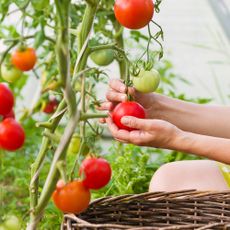What Is A Shropshire Prune – A Guide To Growing Shropshire Prune Damsons

One of the best varieties of plums for cooking is the Shropshire, a type of Damson, often referred to as a prune because it dries well and is tasty. The flavor can be astringent when raw, but delightful when cooked, baked, or dried. Read on for more Shropshire prune Damson information to find out if this is the right plum tree for your garden.
What is a Shropshire Prune?
The Shropshire prune is one of several Damson types of plum. These are small plums with a bitter flavor when eaten fresh. Most people don’t enjoy the taste of a fresh Damson, but everything is transformed by both drying and cooking. When these plums are allowed to turn into prunes, or are baked, stewed, or cooked, their taste is transformed and they become sweet, rich, and flavorful. There are other types of Damson, but the Shropshire prune Damson tree is considered by many to have the tastiest fruits. They are deep purple with a yellow flesh, longer than other varieties, and oval-shaped. The Shropshire tree is smaller than other fruit trees, with a compact growth structure. It does well in zones 5 through 7 and resists many diseases. The Shropshire is also self-fertile, so you don’t need another plum tree for pollination. This and the small growth habit make growing Shropshire prune Damsons a good option for smaller gardens.
How to Grow Shropshire Prune Damson Plums
Growing Shropshire prune Damsons requires similar care as other types of plum trees. Your tree will need full sun, at least six to eight hours per day. It needs soil that is rich and fertile and that drains well. It is important to amend the soil before planting if yours doesn’t meet these needs. During the first growing season, the plum tree needs regular watering to establish good roots. It should be pruned early on as well to create a good shape, and then again annually to maintain the shape and create adequate airflow between branches. Once established, this is a fruit tree that doesn’t need much attention. You can fertilize once a year if your soil doesn’t contain a lot of nutrients, and light pruning each late winter is a good idea. Otherwise, simply enjoy the pretty, white flowers in early spring and harvest your Shropshire prunes in early fall. Can or cook the prunes, dry them, use them in baking and savory dishes, and enjoy the fruits all year round.
Gardening tips, videos, info and more delivered right to your inbox!
Sign up for the Gardening Know How newsletter today and receive a free copy of our e-book "How to Grow Delicious Tomatoes".

Mary Ellen Ellis has been gardening for over 20 years. With degrees in Chemistry and Biology, Mary Ellen's specialties are flowers, native plants, and herbs.
-
 Best Indeterminate Tomatoes: Flavor-Packed Varieties For Fresh Harvests All Summer Long
Best Indeterminate Tomatoes: Flavor-Packed Varieties For Fresh Harvests All Summer LongIndeterminate tomatoes are vining varieties that fruit all season. Discover their distinctive features and how to choose the best type to grow in your garden.
By Bonnie L. Grant
-
 The Dangers Of AI For Gardening – How To Know What’s Real When It Comes To Your Garden
The Dangers Of AI For Gardening – How To Know What’s Real When It Comes To Your GardenThings aren’t always what they seem when it comes to using AI for gardening. Be discerning when relying on AI for accuracy, and take the time to do research.
By Teo Spengler